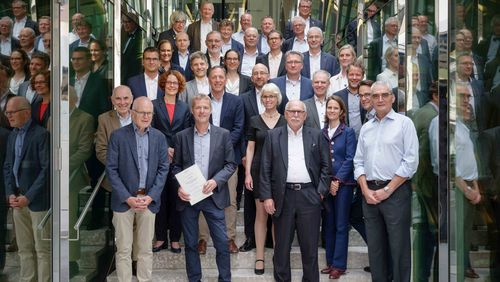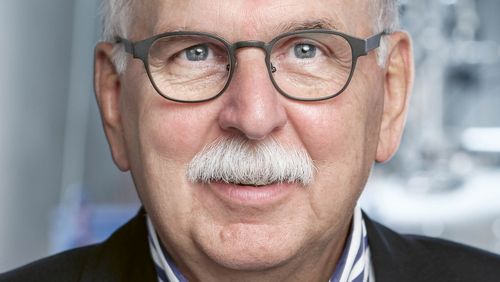
With maximum efficiency in the energy transition
Highly efficient solar cells, virtually loss-free electricity transport, innovative energy storage: researchers in the WSS100 final project “Solar energy” want to develop new technologies to drive the energy transition forward.
Solar power is booming and is generally viewed as the most important component of future carbon-neutral energy production. In order to satisfy the global need for electricity, however, huge photovoltaics plants will have to be built. “From 2037 onwards, we’re reckoning with an annual increase of 3.4 terawatts in new solar modules. Using today’s technology, that corresponds to an expanse larger than a third of Switzerland’s surface area,” says Frank Dimroth from the Fraunhofer Institute for Solar Energy Systems (ISE) in Freiburg, Germany.
In addition to taking up a lot of territory, such an increase would also eat up huge amounts of material and energy. And what’s more, converting sunlight into electricity is only half the battle, says Andreas Bett from ISE Freiburg and Albert Ludwig University of Freiburg: “We also need systems to transport electricity—or to use electric power for producing energy carriers like hydrogen and synthesis gases.”
For their WSS100 proposal, a team led by Dimroth and Bett have developed a concept for more efficient and less extractive technologies—all in the interest of promoting a sustainable energy transition. One of the team’s initial research priorities is in the area of photovoltaics. Today’s solar cells are generally made of crystalline silicon. However, due to physical constraints, their efficiency is less than thirty percent, and the purification processes for silicon consume a great deal of energy.


Ultra-thin solar cells
The team in Freiburg are proposing a more efficient, less extractive alternative: what they call “III-V tandem photovoltaics”. These are solar cells consisting of several semiconductor layers made up of elements from the third and fifth main groups of the periodic table, including gallium, indium, arsenic and phosphorus. Because each layer absorbs a different spectrum of sunlight, these kinds of tandem solar cells attain high conversion efficiency. “Compared to today’s cells, the output with the tandem solar cells is about a third higher per area,” Frank Dimroth says.
In addition to boosting efficiency, the researchers also want to make the solar cells ultra-thin and thus reduce the amount of material needed to a minimum. Today, a silicon solar cell is roughly 150 micrometres thick; the future III-V semiconductors will measure just 1.5 micrometres. Here, the researchers developed a method in which the thin semiconductor layers can be detached from their growth substrate. This enables the substance to be used multiple times, which saves on valuable materials.
Compact light
Combining the III-V semiconductor tandem solar cells with high-concentration photovoltaics (CPV) technology is particularly promising. In this process, economical lenses are used to amplify the sunlight by a factor of one thousand before a tiny solar cell converts it into electricity. “Although we still need a little silicone on glass to construct the lenses, we use one thousand times less semiconductor material,” Andreas Bett explains. The team have recently produced a CPV solar cell that attains an efficiency of 47.6 percent when exposed to sunlight concentrated 665 times—a world record. Overall, the researchers estimate that the new technologies will reduce energy consumption in solar cell production by seventy-five percent.
The team also have another major research priority: energy transport. Because once electricity is generated, it also has to be fed into the grid. One of their ideas is cutting out the transformation of direct current into alternating current and thus attaining higher voltages in solar cells, modules and leads. “This would minimise resistance losses, and we could use thinner cables,” Andreas Bett says. Large amounts of copper and aluminium could be saved, especially in applications that use direct current—in electrolysis, for example.
Hydrogen and syngases
High-concentration photovoltaics in particular work well in regions with intense solar radiation, including southern Africa and Australia. And these regions are also ideally suited to convert cheap solar power into hydrogen or other energy carriers that are easy to transport and store.
This is yet another area of research for the project team. They want to investigate new systems for hydrogen production, in particular electrolysis using electrolysers with a membrane exhibiting ionic conductivity properties that is able to separate the hydrogen from the oxygen. “We plan to develop new polymers for stable, more ecological membranes and combine them with catalysts made of non-critical metals like nickel and iron,” Dimroth says.
Downstream, sustainable and energy-saving synthesis processes will be developed to produce molecules like ammonia, methanol or dimethyl ether that can be used to store hydrogen—hence energy—and transport it over long distances.
Attaining maximum efficiency, achieving high voltage, perfecting innovative technologies: this is how the researchers in the “Solar energy” project are aiming to drive the energy transition forward.


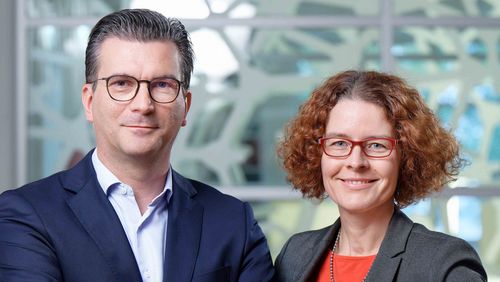
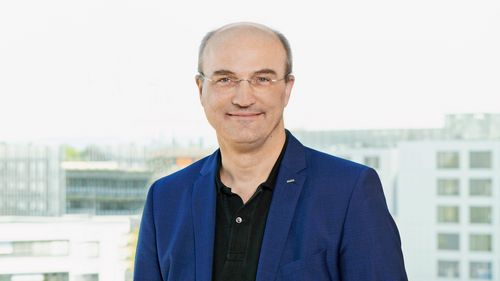
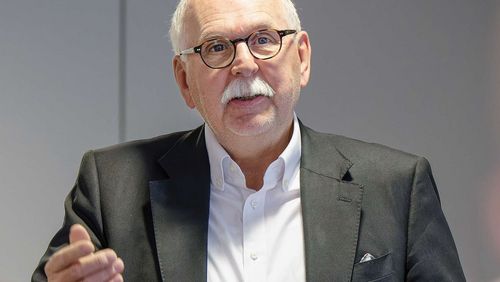
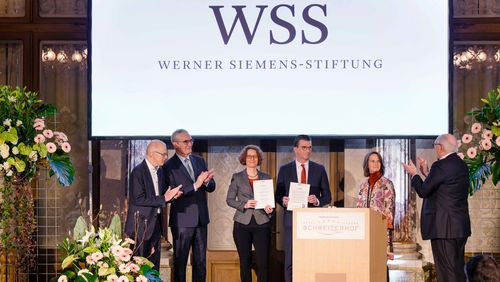
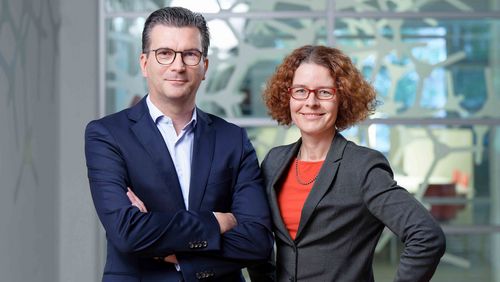
![[Translate to English:] [Translate to English:]](/fileadmin/_processed_/8/d/csm_01-WSS100-Muenchen_a4e2ba3a7f.jpg)
![[Translate to English:] [Translate to English:]](/fileadmin/_processed_/0/7/csm_01-WSS100-Zuerich_20aa6e51dd.jpg)
![[Translate to English:] [Translate to English:]](/fileadmin/_processed_/5/e/csm_01-WSS100-Aachen_c843f6f8ae.jpg)
![[Translate to English:] [Translate to English:]](/fileadmin/_processed_/8/e/csm_01-WSS100-Berlin_8becb34d03.jpg)
![[Translate to English:] [Translate to English:]](/fileadmin/_processed_/e/3/csm_01-WSS100-Goettingen_f4c6bb4b9f.jpg)
